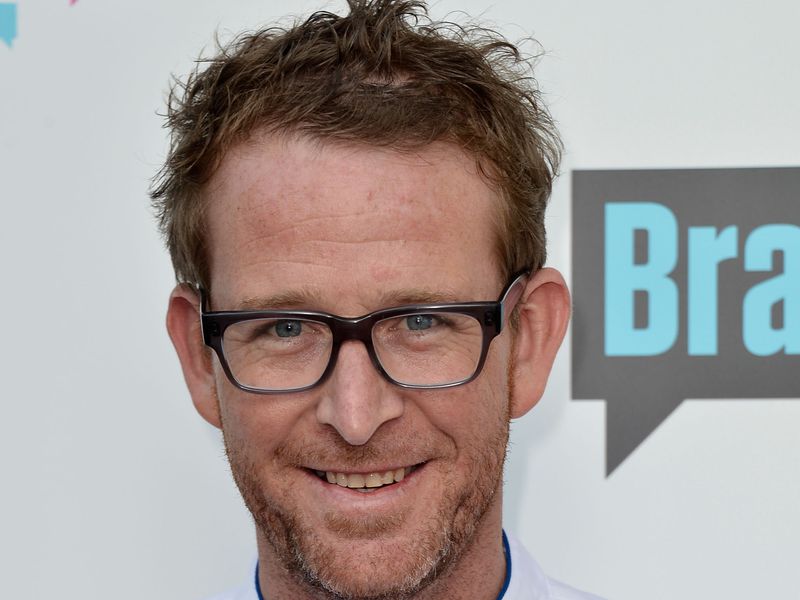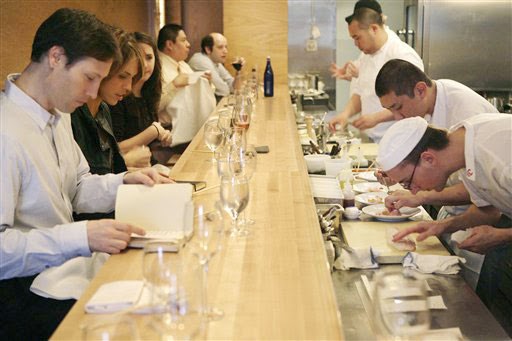
“He had too much energy. His mind was turning, turning, turning – always turning,” Heath Ledger’s
fiancé, Michelle Williams, explained less than two months after the actor’s death. Throughout Heath Ledger’s acting career, many
people who worked beside him on films noted his passion for his craft and his
constant need to improve upon his performance as an actor. Christopher Nolan, who worked with Heath
Ledger in Ledger’s iconic role as the Joker in the film The Dark Knight, noted in several interviews that Ledger’s strong
desire to immerse himself in the role of the Joker came before a script had
even been written for the film. In the
same way, Ledger showed a strong fascination and passion toward the filmmaking
process. Ledger himself even described
his immersion into the Joker’s character to Empire Magazine in 2007 saying, “I
sat around in a hotel room in London for about a month, locked myself away,
formed a little diary and experimented with voices and laugh. I ended up landing more in the realm of a
psychopath – someone with very little to no conscience towards his acts.” He even went as far as doing his own makeup
for the role and choosing the Joker’s attire.
This extensive immersion into the role of the Joker and the
creative process of Ledger to create the persona of the Joker aligns itself
with Mary Ann Collins and Teresa Amabile’s article, Motivation and Creativity, where they state, “creativity must occur
in a context of self-evaluation rather than being driven by a concern with
being evaluated by others,” and “creativity is motivated by the enjoyment and
satisfaction that a person derives from engaging in the creative
activity.” However, Ledger’s passions
for acting and his criticism of his work were not isolated to his role as the
Joker, but were evident throughout his acting career. Ledger was constantly taking dissimilar roles
in films from 10 Things I Hate About You to
A Knight’s Tale to Brokeback Mountain and The Dark Knight. When asked why he does this he stated, “I
feel like I’m wasting my time if I repeat myself. I can’t say I was proud of my work. I feel the same way about everything I do. The day I say, ‘It’s good’ is the day I
should start doing something else.”

In addition to the factors that motivated Ledger to
constantly improve upon himself by driving his creativity, Ledger’s also
possessed the “creative personality” that Mihaly Csikszentmihalyi theorized in
his article, The Creative Personality. Csikszentmihalyi described a “complex
personality” that “[involved] the ability to move from one extreme to the other
as the occasion requires,” as being conducive to enhancing creativity. Csikzentmihalyi provides ten dimensions of
this complex personality that embody the characteristics of individuals with
superior creativity, some of which are very relevant to Ledger’s
personality. One being “creative boys
are more sensitive and less aggressive than their male peers.”
Being the only boy sibling in his family (he had one older
sister, Kate, and two younger half-sisters, Ashleigh and Olivia) may have
contributed to Ledger’s ability to be very masculine on film but also being “
vulnerable,” as Williams described, as well.
Williams stated, “ You can pick it up in his performances, but it’s easy
to overlook because he was so physical and beautiful and strong and masculine.
But there was always that underlying sensitivity.” Ledger’s ability to be on both extremes of
this spectrum perfectly embodies the creative personality that Csikzentmihalyi presented.
Another dimension is the ability to feel “suffering and pain
yet also a great deal of enjoyment.”
Watching many interviews with Heath Ledger online when he’s discussing
his roles in certain movies or just working with certain individuals in the
industry (Christopher Nolan for example), you can tell in his words and body
language that he absolutely loves what he does.
However, at the same time, his high physical energy and passion for his
craft also caused him a great deal of pain in being unable to sleep. When preparing for his role as the Joker,
this inability to sleep became worse, and he described his experience as, “
Last week I slept an average of two hours a night. I couldn’t stop thinking. My body was exhausted, and my mind was still going.”
Unfortunately, this suffering and pain ultimately led to
Ledger’s tragic death that cut short the life of a young, promising actor. On the afternoon of January 22, 2008, Heath
Ledger was found dead in his loft apartment in Manhattan. The cause of death was acute intoxication due
to a lethal combination of pain medication and sleep medication. Many people speculated after his death that
he couldn’t sleep because he was too immersed in the Joker role and it drove
him insane as well as many similar theories, but all of those are misguided
theories. Heath Ledger was not being
driven insane by the demons of the Joker, he was not going insane because of
the role, and he simply couldn’t sleep. It’s
so sad to think that the world lost such an amazing, young, creative,
passionate actor because his mind couldn’t shut off. He couldn’t stop creating. He. Just. Needed. Sleep.
RIP Heath Ledger.
http://www.nytimes.com/2007/11/04/movies/moviesspecial/04lyal.html?_r=2&oref=slogin&
http://www.upi.com/Entertainment_News/2008/03/13/Williams-recalls-Ledger-as-vulnerable/20251205448189/
http://uproxx.com/filmdrunk/2014/11/7-things-christopher-nolan-has-revealed-about-heath-ledgers-joker-role/
http://www.ign.com/articles/2013/05/31/heres-heath-ledgers-dark-knight-joker-diary
https://www.youtube.com/watch?v=PdRY-BjdqJM
Collins, Mary Ann and Teresa Amabile. "Motivation and Creativity."
Csikzentmihalyi, Mihalyi. "The Creative Personality."














